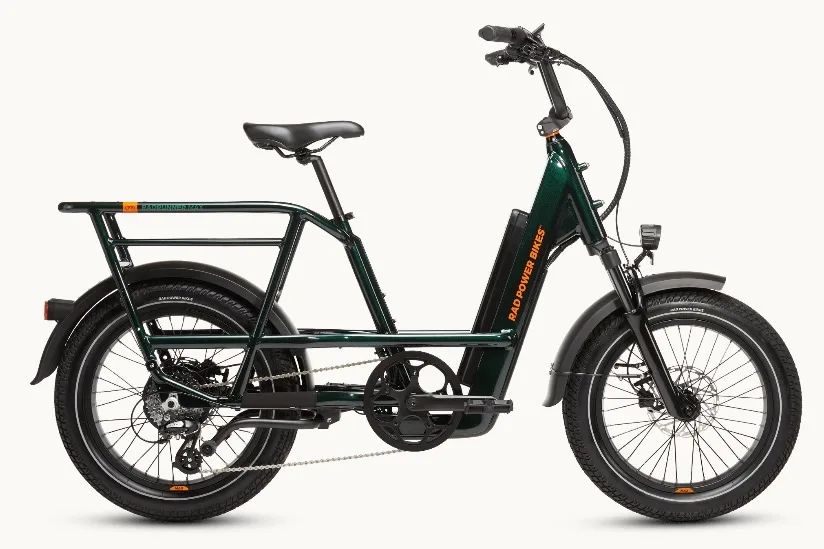In the past decade or so, the RadRunner has become one of Rad Power’s most popular e-bike models. Head to any beach town in the U.S., and you’ll probably see hundreds of teenagers and adults riding around on some version of these bikes. It makes sense, too, as these “utility bikes” have traditionally been quite affordable while combining cargo-carrying capability with a more compact and approachable size.
Back in May, we reported on the launch of not one but three new RadRunner models. This refresh gave riders the option to choose the price point and features that best aligned with their needs and budget. At the top of that lineup is the RadRunner Max, boasting a more refined look, the most power, the highest top speed, updated controls, more cargo capacity, and enhanced security and safety features.
I’ve been testing the RadRunner Max ($2,299) for the past couple of months in and around Reno, NV. I’ve been driving less and using this bike as much as possible for everything from errand runs, grocery shopping, trips to the trailhead, and heading out for evenings on the town. It’s smooth, fast, and its utility and versatility have made it my go-to for just about all of my urban and suburban needs. Plus, its comparatively compact size makes it easier to handle, and it takes up less space in my garage than a full-size cargo bike.
- MSRP: $2,299
- E-bike class: 1, 2, or 3 (up to 28 mph)
- Motor power and type: 750W rear hub (90 Nm torque)
- Battery capacity: 672 Wh
- Claimed range: 19 – 61+ miles
- Weight capacity: Total: 420 lbs., rear rack: 120 lbs.
- Wheel and tire size: 20" x 3.5"
- Bike weight: 82 lbs. (incl. battery)
Pros
- Super utilitarian
- Fast and powerful
- Comfy ride with suspension fork and wide tires
- Versatile for use on paved and dirt surfaces
- Lots of security and safety features
Cons
- Heavy
- Needs some accessories to unlock cargo carrying potential
It wasn’t that long ago that Rad Power Bikes was the dominant player in the affordable e-bike market in North America. In recent years, the brand has had some stiff competition from numerous upstarts battling for the affordability crown. Rad Power hasn’t gone anywhere, of course, and the brand continues to put out quality e-bikes of all kinds. Their prices have gone up a bit (what hasn’t), but the quality of the bikes has gone up in kind. The latest Rad Power Bikes are a big step up compared to many of the brand’s earlier models.

Rad Power RadRunner Max Details
Before I discuss my experience using the RadRunner Max, here’s a quick overview of the bike’s specs and features.
Frame and Fit
The RadRunner Max has a slightly different frame design than its less expensive siblings, doing away with the swoopy lines in favor of a more angular aesthetic. It looks quite similar to the Radster Trail and Radster Road in that regard, and the aluminum frame seems very beefy and overbuilt. The 672 Wh battery is semi-integrated into the downtube of the frame, and can easily be removed for charging off the bike if needed. The stout rear rack is welded onto and incorporated into the frame design. A sturdy dual-leg kickstand supports the bike when you aren’t riding it.
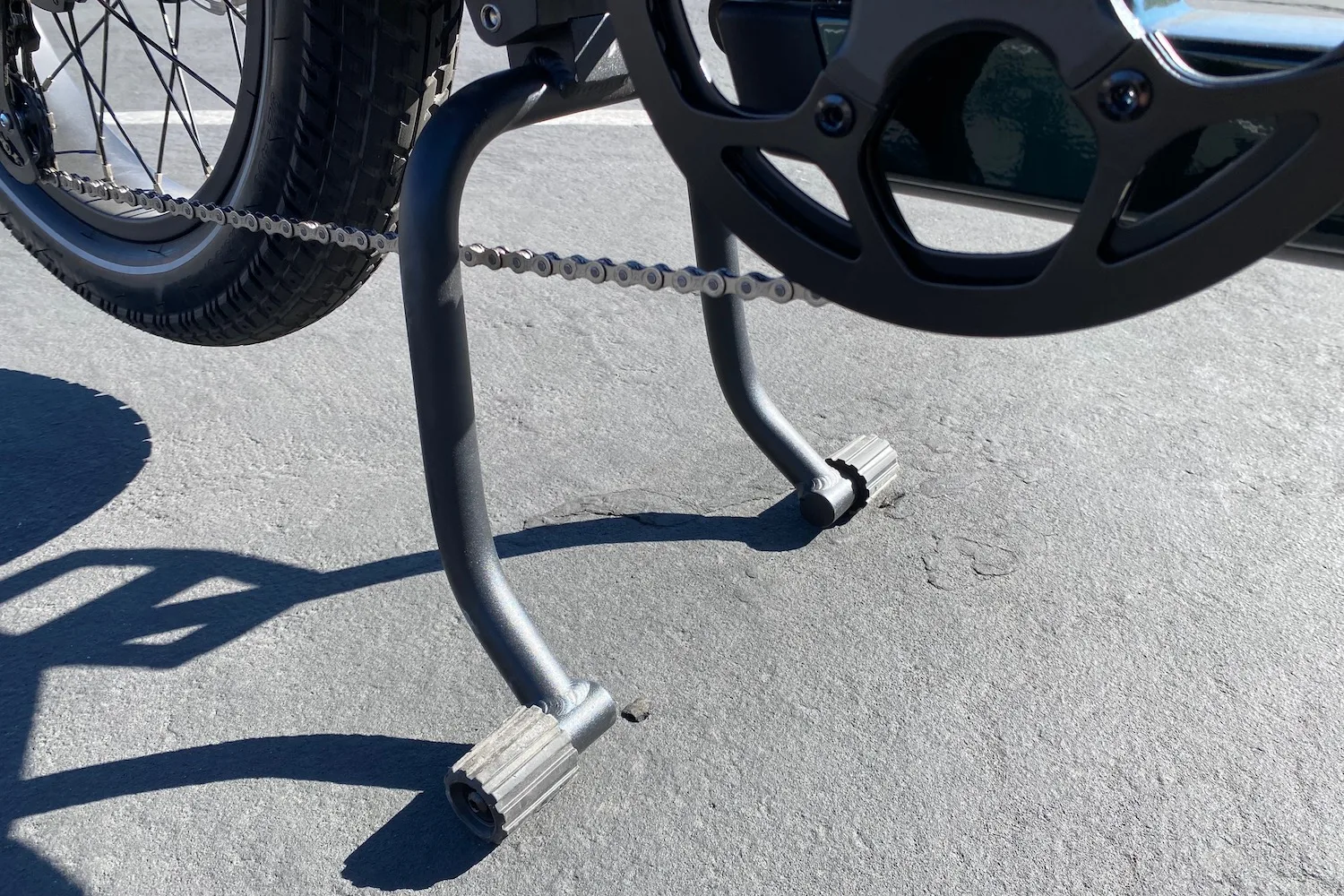
Rad Power states a total weight capacity of 420 pounds, and up to 120 of that can be supported by the rear rack. The bike has a rider weight limit of 275 pounds. Like many electric bikes, the RadRunner Max only comes in one frame size. Still, it’s claimed to fit riders between 4’11” and 6’2”. The bike weighs a whopping 82 pounds with the battery, and that drops to 72 pounds with the battery removed.
Like other rad Power bikes, the RadRunner Max is designed to work with a range of aftermarket accessories. It has mounting points for front and rear baskets, bags, and cargo boxes. These things cost extra, of course, but they allow you to set up your bike to better suit your needs.
Components and Features


The RadRunner Max comes with an 80 mm suspension fork to take the edge off bumps in the road. It rolls on wide 20” x 3.5” wheels/tires with a “multi-surface tread pattern.” It has powerful Gemma hydraulic disc brakes with 180 mm rotors front and rear, and an 8-speed Shimano drivetrain with intuitive and precise trigger shifters. It comes with an aluminum BMX-style handlebar, a comfortable seat, and durable alloy platform pedals.
The RadRunner comes ready for all weather conditions with full coverage fenders front and rear. It’s also ready for changing light conditions with a bright headlight and rear light. The headlight has an ambient light sensor, auto on/off, and several light modes to choose from. The standard brightness is 450 lumens, plus it has a “high beam” setting that bumps it up to 750 lumens. The rear light functions like a brake light and turn signals, plus Rad Power added a radar function that warns you of vehicles approaching from behind.
For an added layer of security, Rad Power has added passcode protections to the controls, so you can lock and unlock the with your phone or through the display. It also works with Apple Find My, so you can keep tabs on the bike if someone else is using it or if it gets lost or stolen.
Motor, Battery, and Display

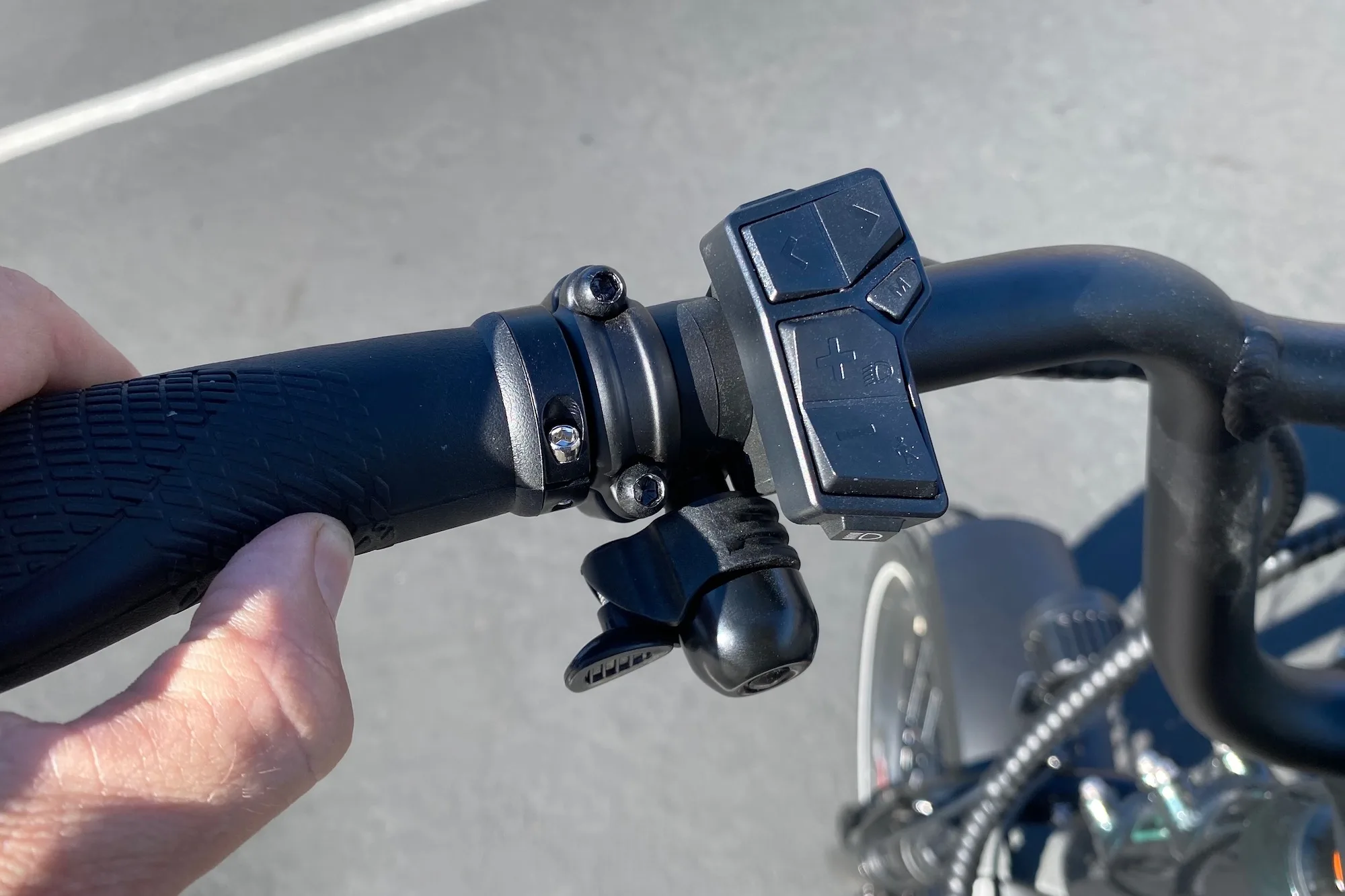
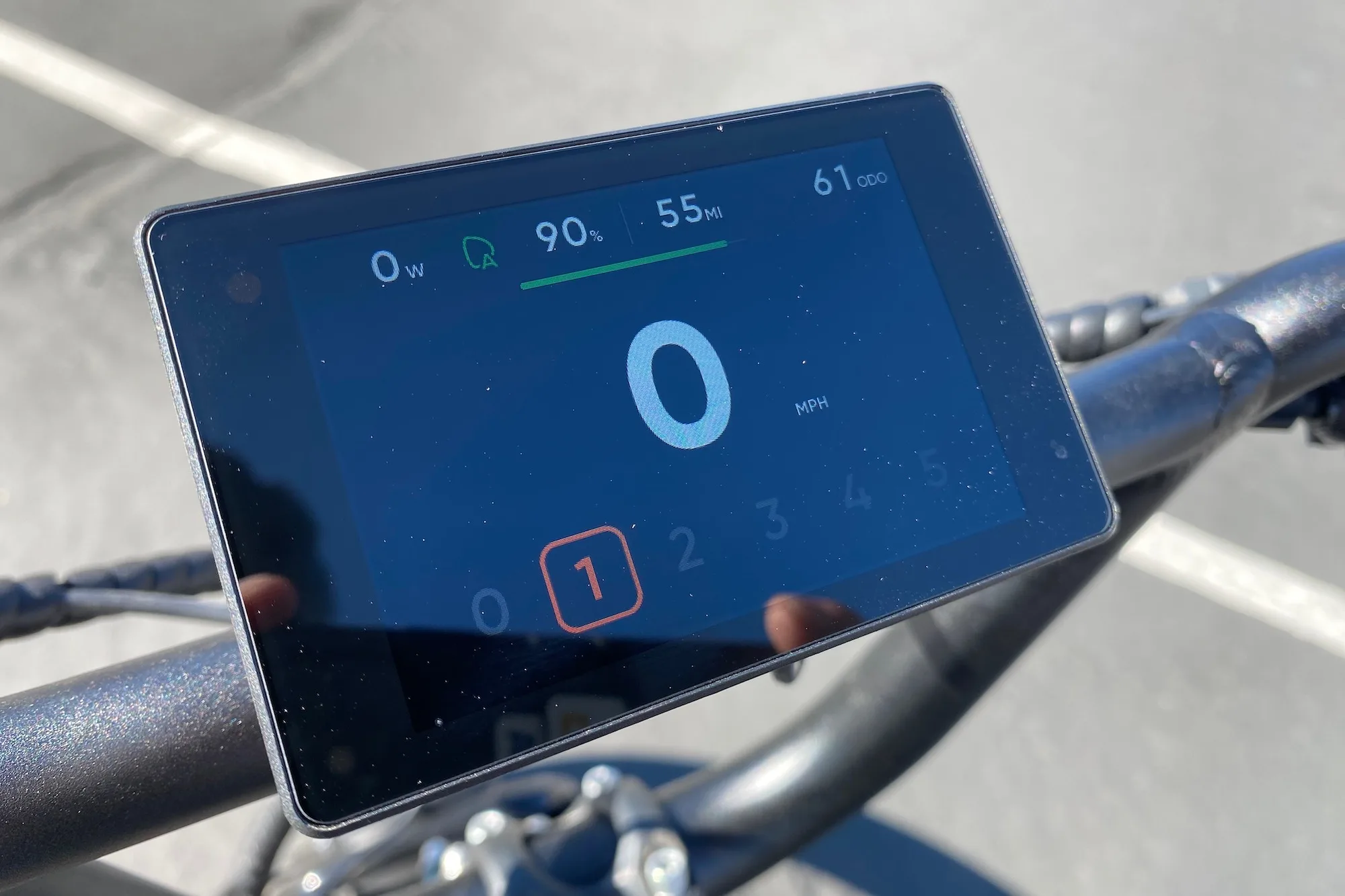
The RadRunner Max uses a 750 W rear hub motor that provides up to 90 Nm of hill-flattening and cargo-hauling torque. There are five levels of pedal assist and a twist throttle. Pedal assistance is based on a torque sensor, which provides smooth and natural-feeling power delivery. Top speed is up to the user, and can be selected in the bike’s menu through the controls and display. Riders can choose between:
- Class 1: up to 20 mph pedal-assist only
- Class 2: up to 20 mph pedal assist and throttle
- Class 3 Limited: up to 25 mph pedal assist, up to 20 mph throttle
- Class 3: up to 28 mph pedal assist, up to 20 mph throttle
The controls are located on the handlebars next to the left grip, with buttons for power, pedal assist levels, turn signals, and the settings menu. The buttons are easy to reach with the thumb while riding and intuitive to use and understand. The color display is large and centered on the handlebars. It’s bright and easy to read in any light condition, and it has a USB-C port for charging other electronics. It shows current speed, distance, estimated range, pedal assist level, and headlight setting. The twist throttle is integrated into the right grip, and it activates the throttle with a twist of the wrist.
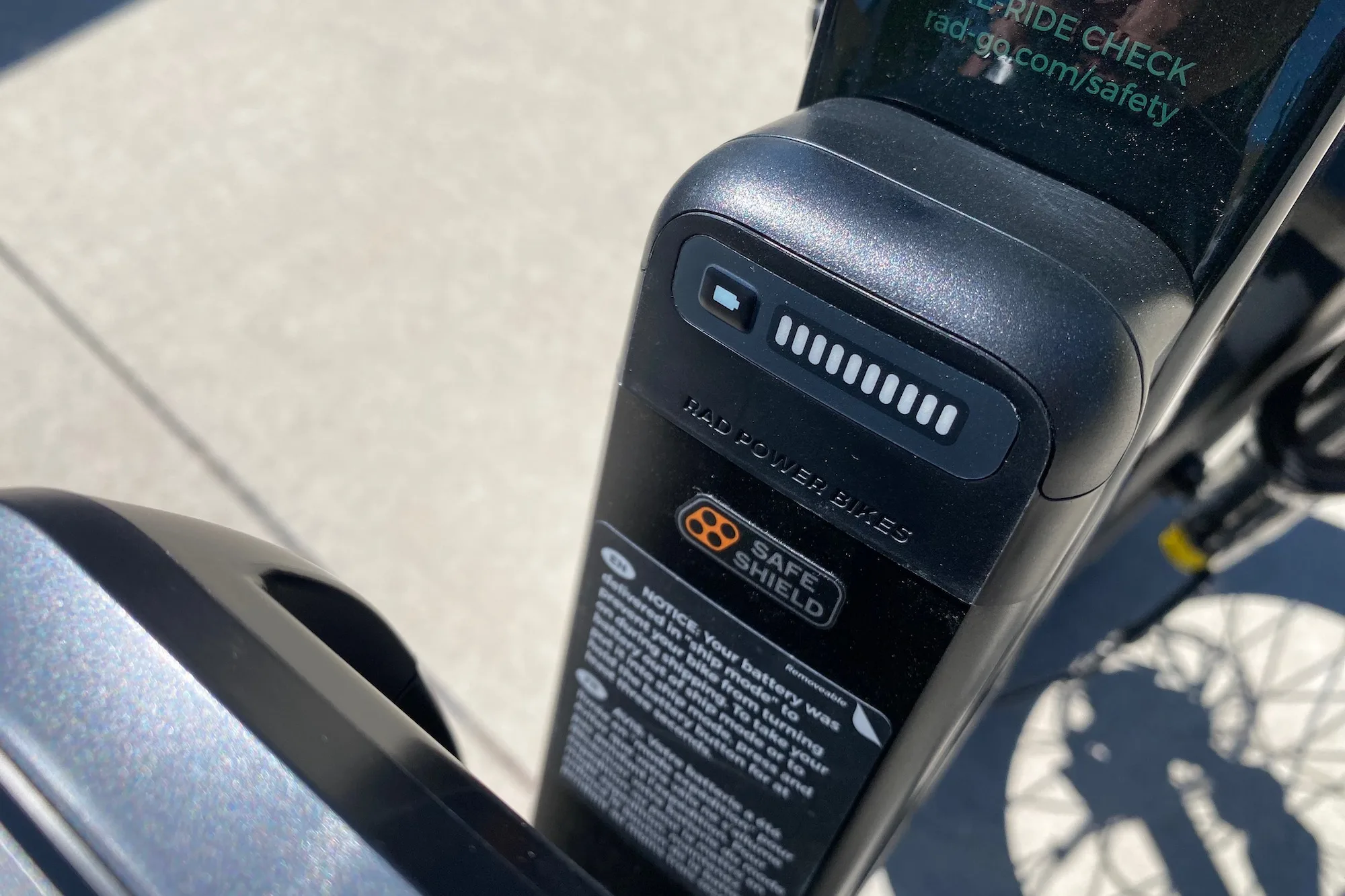
Powering it all is a sizeable 672 Wh battery. Like all of Rad Power’s latest bikes, this battery features the brand’s Safe Shield technology. This is a safety technology that encapsulates all of the battery cells in a heat-absorbing resin with the goal of reducing the chances of thermal runaway resulting in a battery fire. Additionally, the system and battery are certified to the UL 2271 and UL 2849 standards. The RadRunner is also compatible with the new RadRunner Range Extender ($249), so riders can basically double their range with a battery that fits into the cargo rack.
Assembly
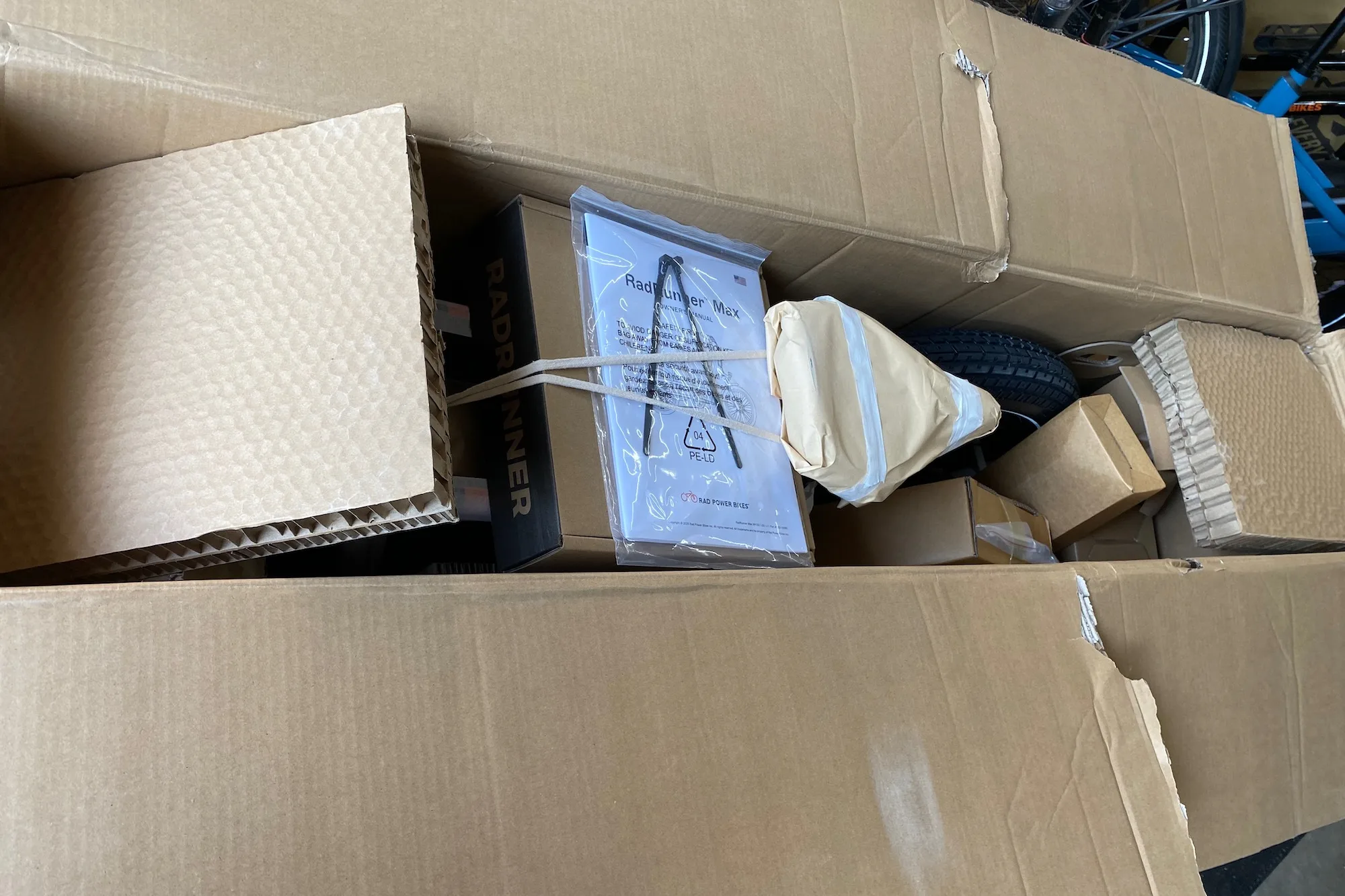

Rad Power has been selling bikes directly to the consumer for many years, so they have the delivery and assembly process pretty dialed. The bike does not come fully assembled, and there is a small amount of assembly remaining for the consumer. Thankfully, it’s all quite straightforward to complete using the included tools and detailed printed instructions and/or watching the assembly video. It took me about an hour to go from the box to being ready to ride.
Nowadays, Rad Power also has a few retail stores and works with lots of shops across the country as retail and service partners. So, it’s also possible to take a test ride and/or buy your new bike from a shop that will put it together for you. This may be a better option for those with limited space, time, or mechanical know-how.
The Ride
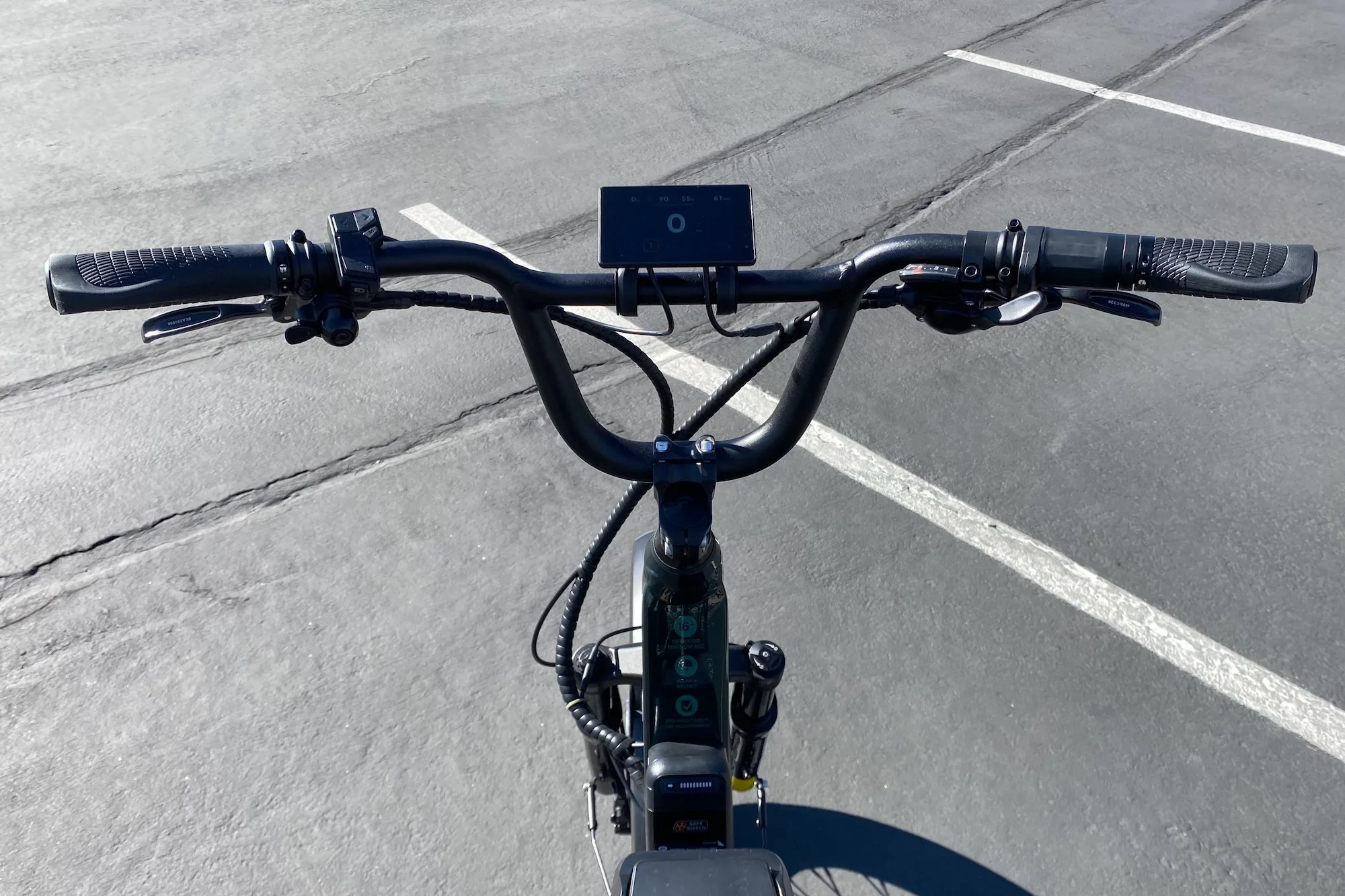
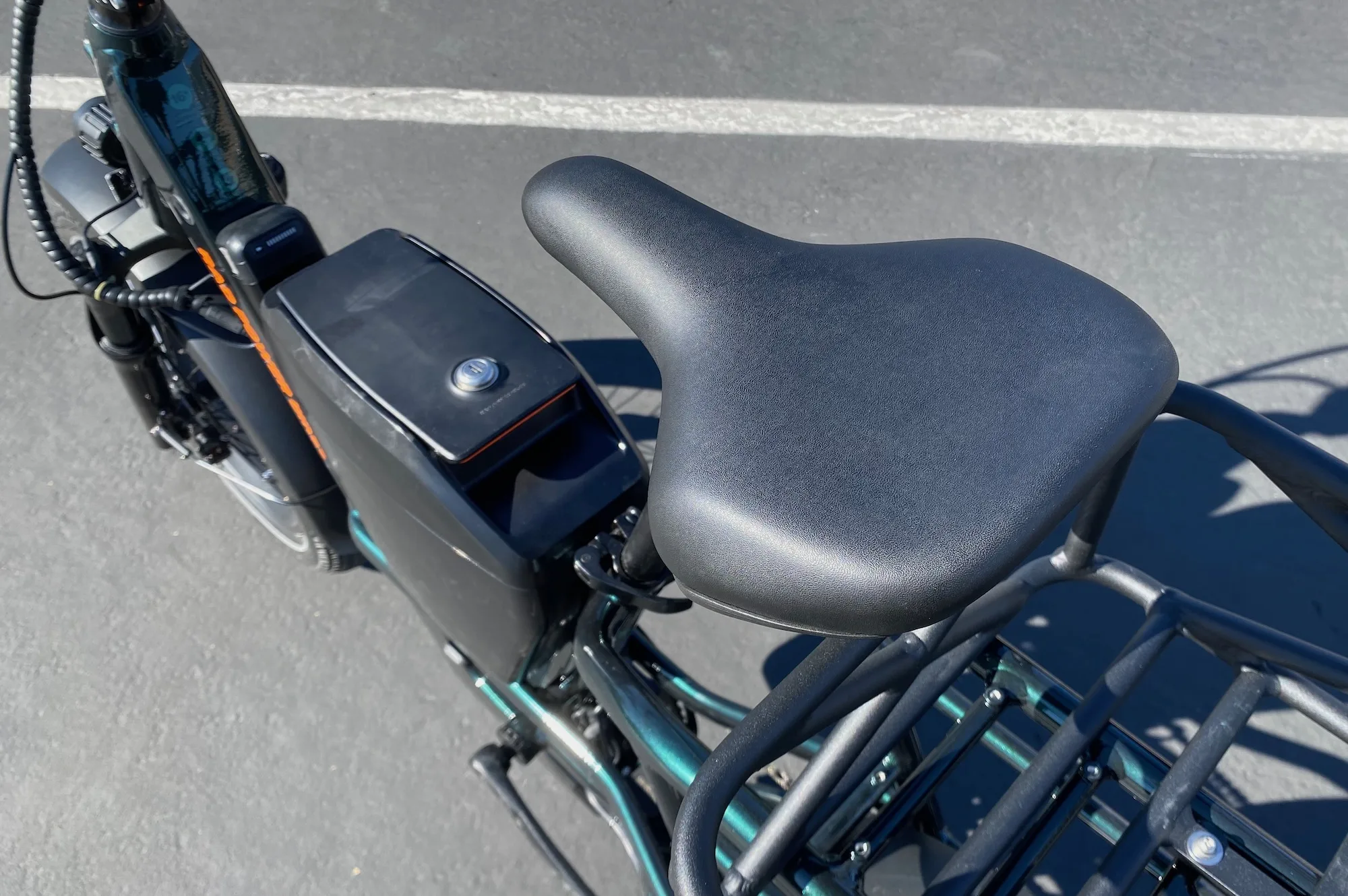
I’ve been riding the RadRunner Max for the past couple of months, and it has quickly become the bike I reach for just about any time I’m leaving the house for anything other than a mountain bike or gravel ride. Compared to the full-size cargo bikes that I’ve ridden, the RadRunner is a better fit for my needs and lifestyle, and it’s easier to handle and store.
To start, this bike is quite comfortable. I’m 6’0” with very long legs, and I sometimes max out the seat height on similar bikes, but there’s room to spare on the RadRunner. The seated position is upright and quite casual with the BMX-style handlebars, and I get along just fine with the ergonomic grips and the seat. It’s quick and easy to adjust the bike for my 5’7” wife, and it appears there’s ample adjustment to fit riders much shorter than her. The suspension fork and wide tires also add to the comfort, providing a relatively smooth ride over bumps and less-than-perfect surfaces.
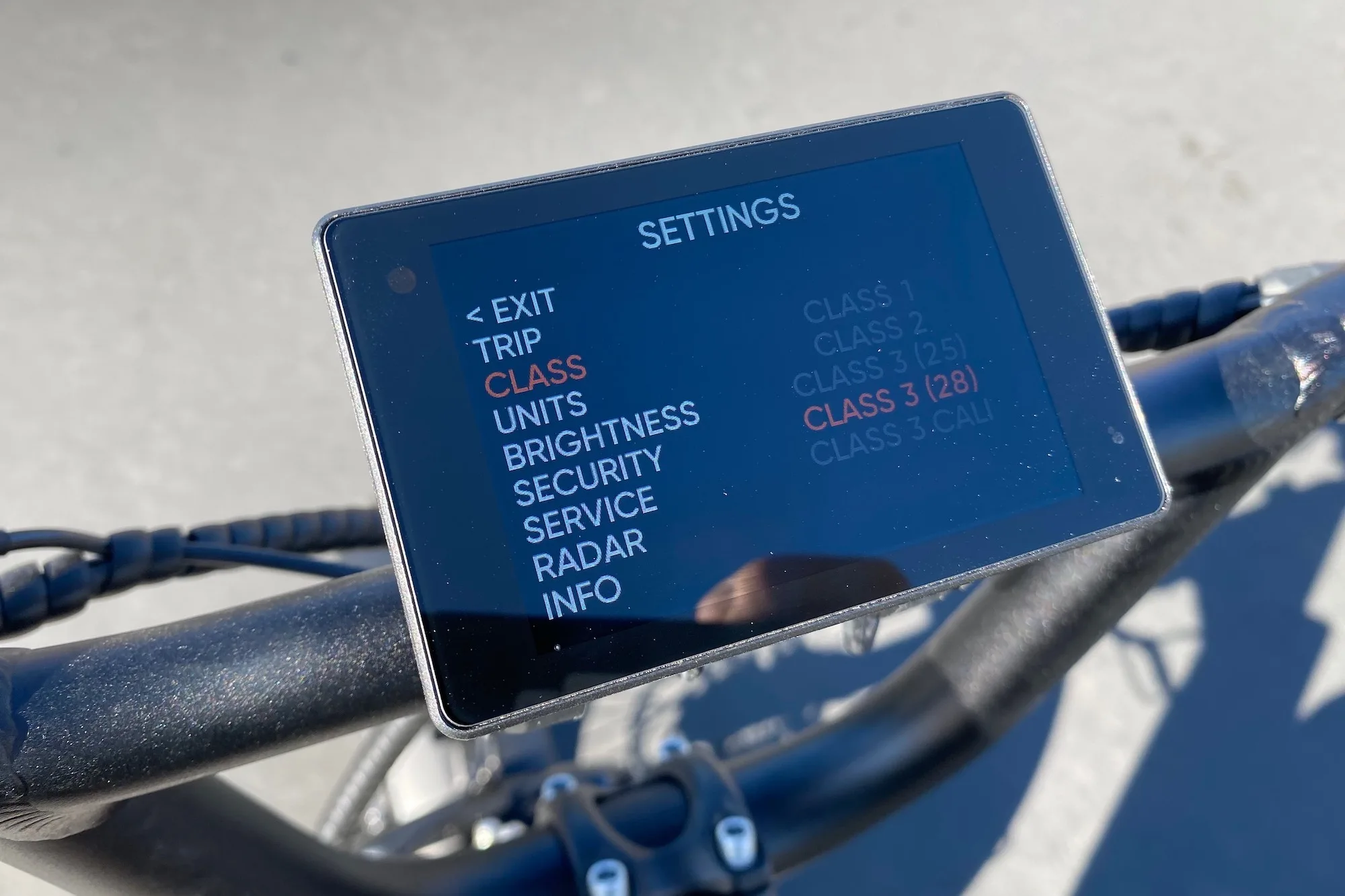
I’m mostly using the RadRunner in place of my vehicle, and I tend to always be in a rush, so I bumped the top speed up to 28 mph and left it there. This was super quick and easy to do through the settings menu, which is very user-friendly. Now, I can blast at full speed to the grocery store on level 5, or I can cruise at a lower speed in level 2 or 3. With the RadRunner’s torque sensor, it doesn’t just overwhelm you with power. Instead, it comes on proportionally with your pedaling effort. You need to push on those pedals a bit to rip along at 28 mph.
The throttle response is quick, and I use it a bit to get started from a complete stop with a load on the back. It also has no problem whisking you along at 20 mph on flat ground. I prefer to pedal bikes when I ride them, even if they have a motor, so I don’t really use it all that much, but I do appreciate having the option from time to time.
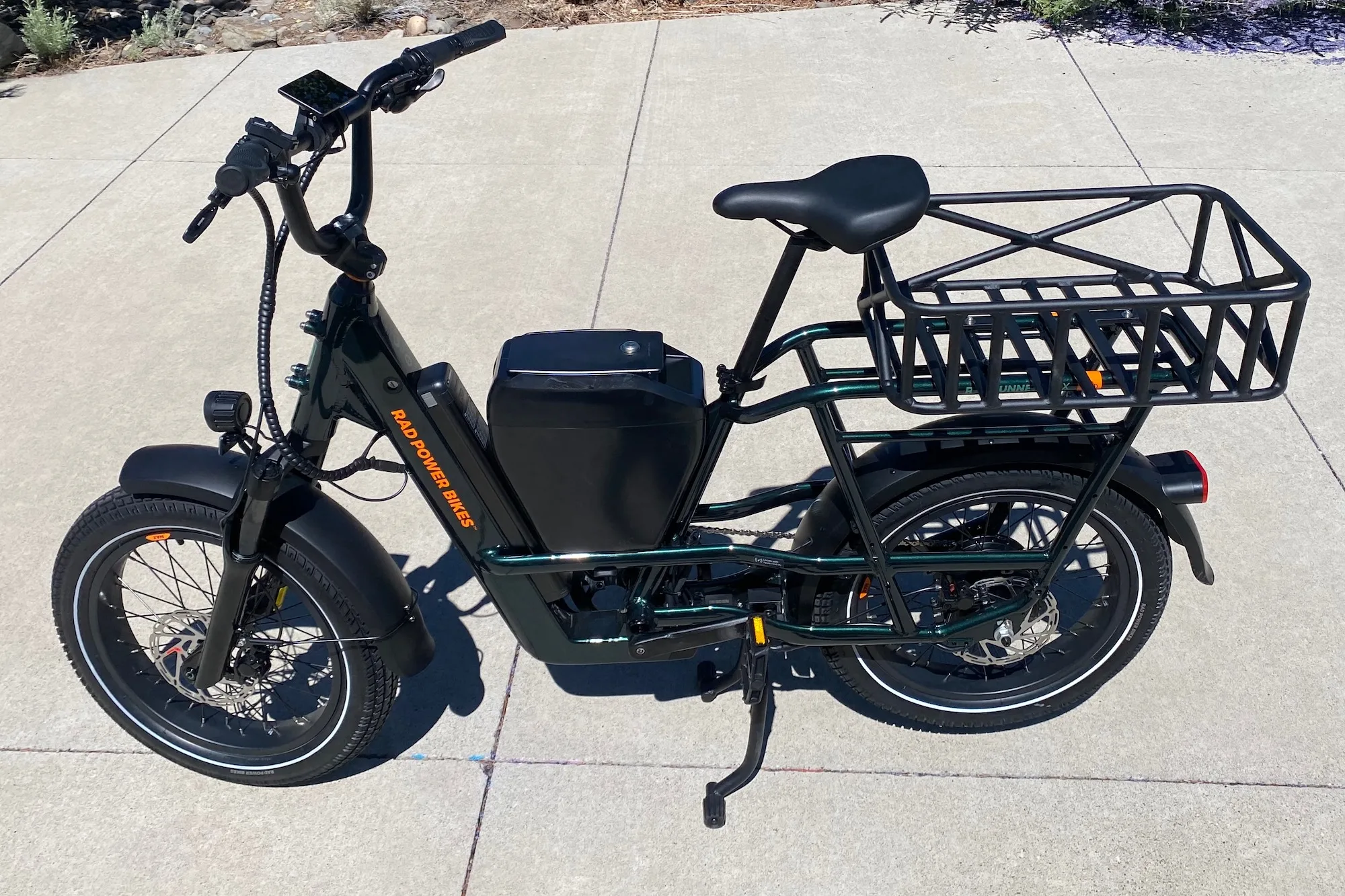
Compared to a full-size electric cargo bike like the RadWagon 5, the RadRunner Max feels quite a bit easier to handle. According to the specs, the wheelbase is only 4 inches shorter, but its turning radius is way smaller, and it’s a lot more maneuverable. It still feels plenty stable at speed, and I’ve found it to be comfortable making turns of all shapes and sizes. The maneuverability applies when you’re off the bike, too, as it’s significantly easier to navigate a crowded garage or when parking it downtown. Overall, it’s an easy bike to get along with, handling-wise.

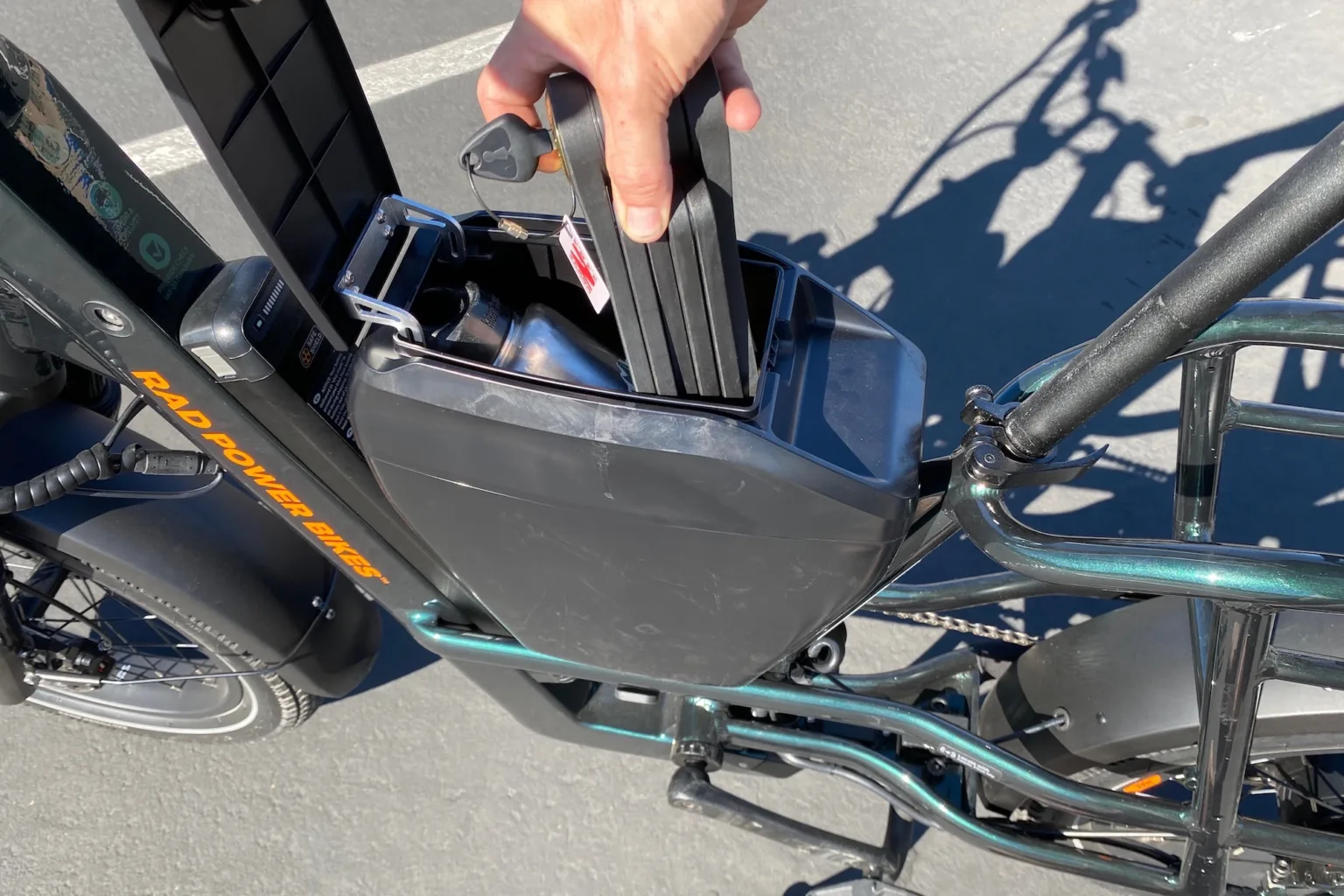
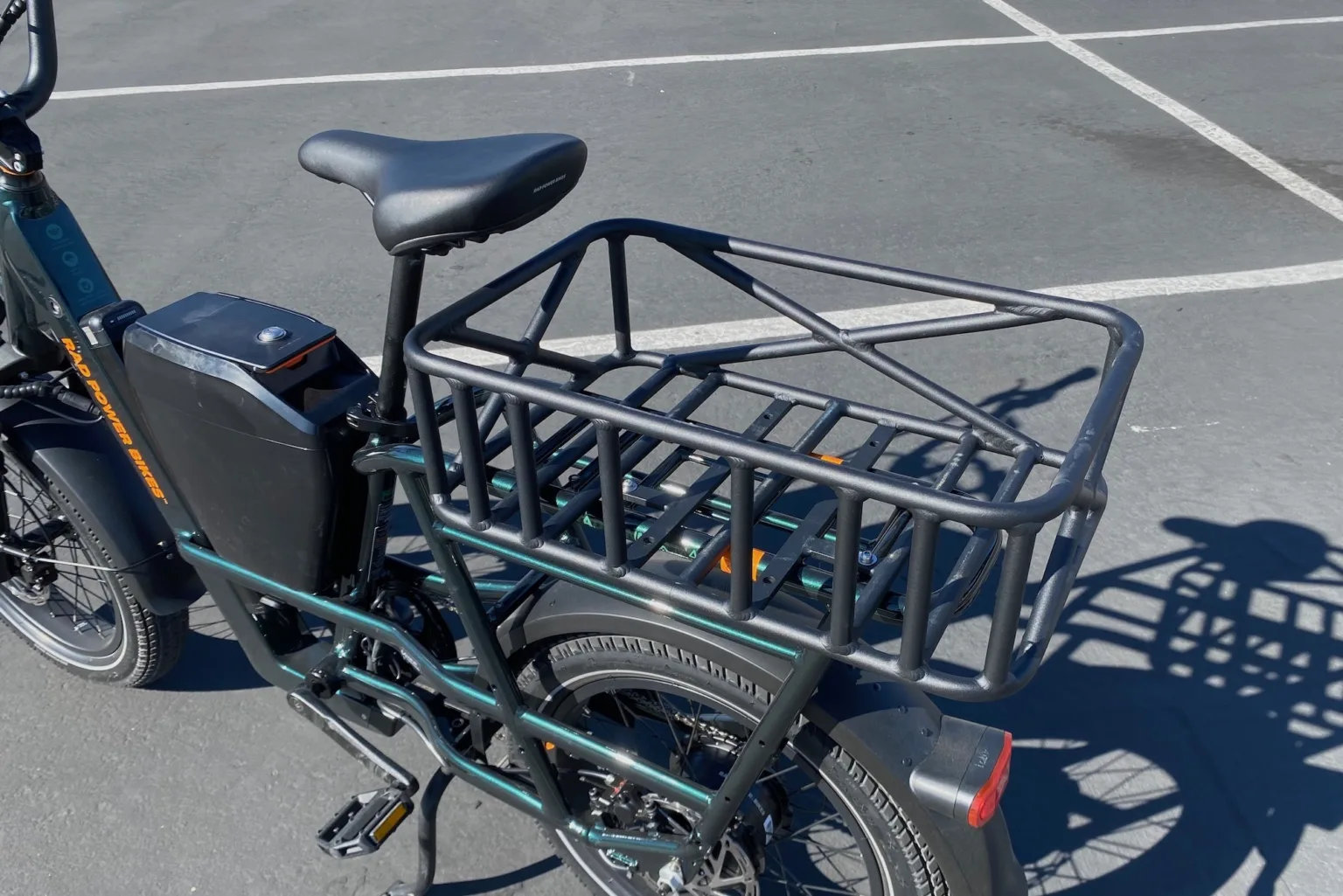
I’ve got mine set up with the large rear basket ($119) as well as the “console” ($129). Both of these accessories were very easy to install, and ensure that I’ve got ample room for carrying larger gear/cargo on the back and smaller items that I want to keep secure in the locking console box. I’ve carted a 40-pound box of kitty litter and a twelve-pack on the back of the bike without any issues. I’m always shocked at how much stuff — light jacket, extra layer, water bottle, bike lock, etc. — can fit into the console, too. There are also plenty of other options for passengers, pets, and more.
Compared to many inexpensive bikes with thumb shifters for the drivetrain, the trigger shifters on the RadRunner Max are so much better. The hydraulic disc brakes are also plenty powerful and handle the high speeds and heavy weight of this bike without issue. The wide tires have a “multi-surface tread”, which helps to give it relatively good surface versatility. I’ve mostly been riding it on pavement, but it has no issue when I venture down a gravel path or smooth dirt trail. The caveat is that the tires feel a little draggy when cornering on pavement, but you get used to that pretty quickly.
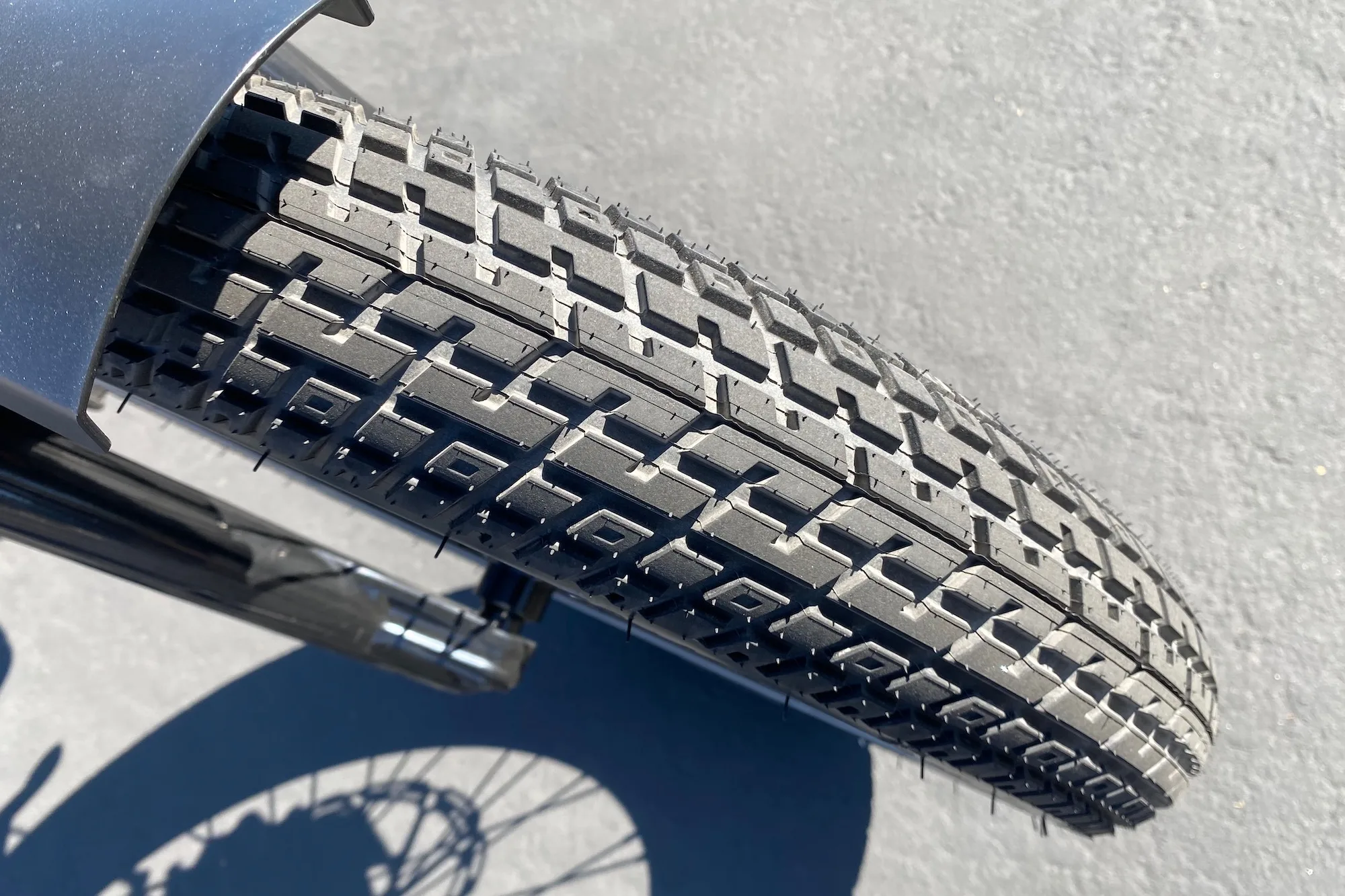
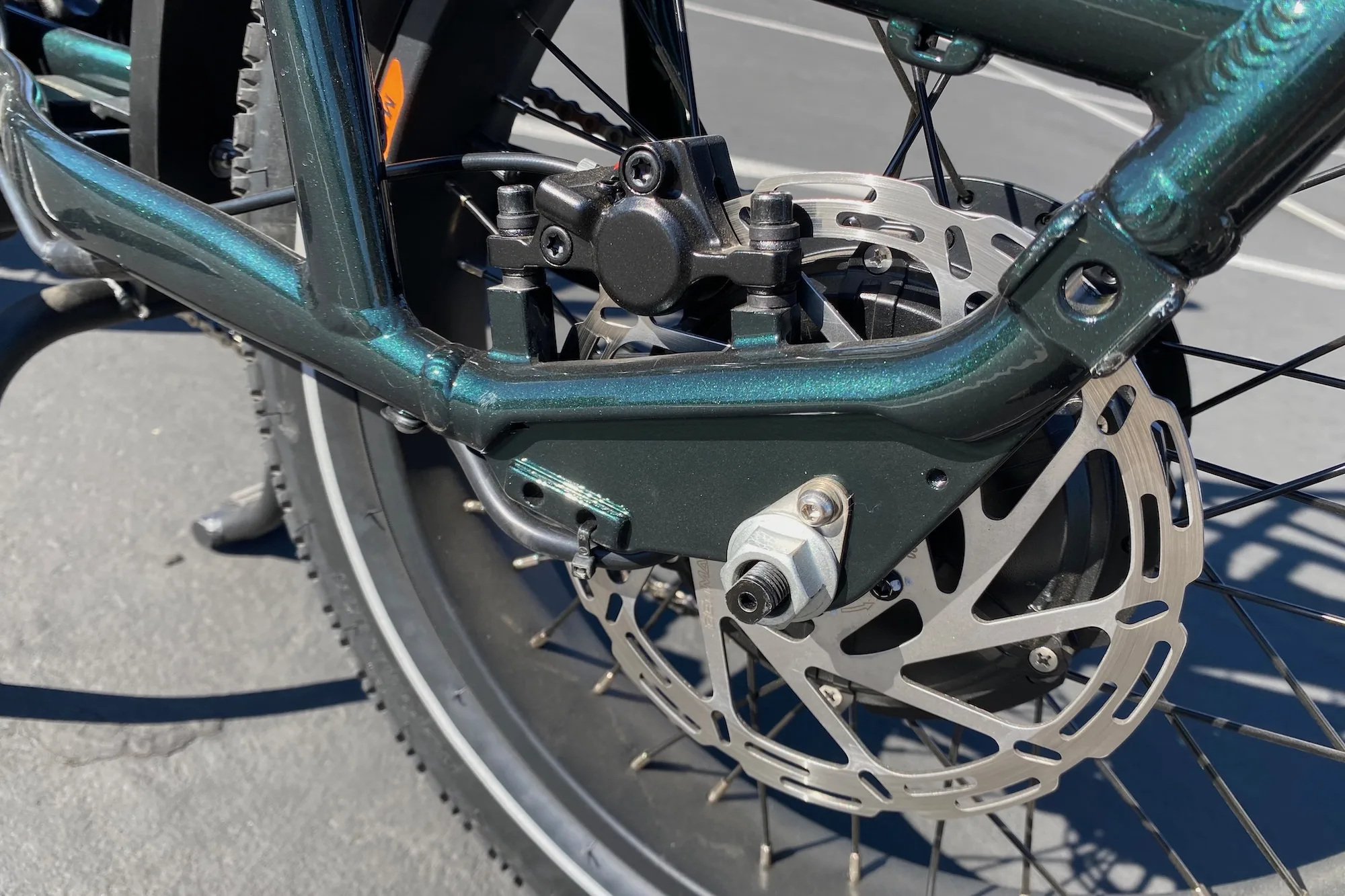
The e-bike controls and color display are also fantastic. It’s very easy to change assist levels, turn blinkers on/off, make changes to the bike’s settings, and monitor everything while you ride on the screen. The lights work quite well, and I’ve enjoyed the “high beam” headlight on rides home in the dark. I disabled the radar feature on the rear light almost immediately because I found it to be annoying, but I can see how it might benefit some other riders.
Most of my trips are relatively short jaunts to and from the store or down to meet friends at a bar or music on the river — anywhere between 3 and 12 miles round trip. I’ve never come anywhere close to draining the battery, so I can’t say with any certainty what this bike’s range actually is. It has been more than adequate for my needs, but I think people would be very hard-pressed to get anywhere near the top end of Rad Power’s claimed range of ~60 miles. Based on my experience, I’d say that around 30 miles (give or take 5 miles or so) is a more reasonable expectation.
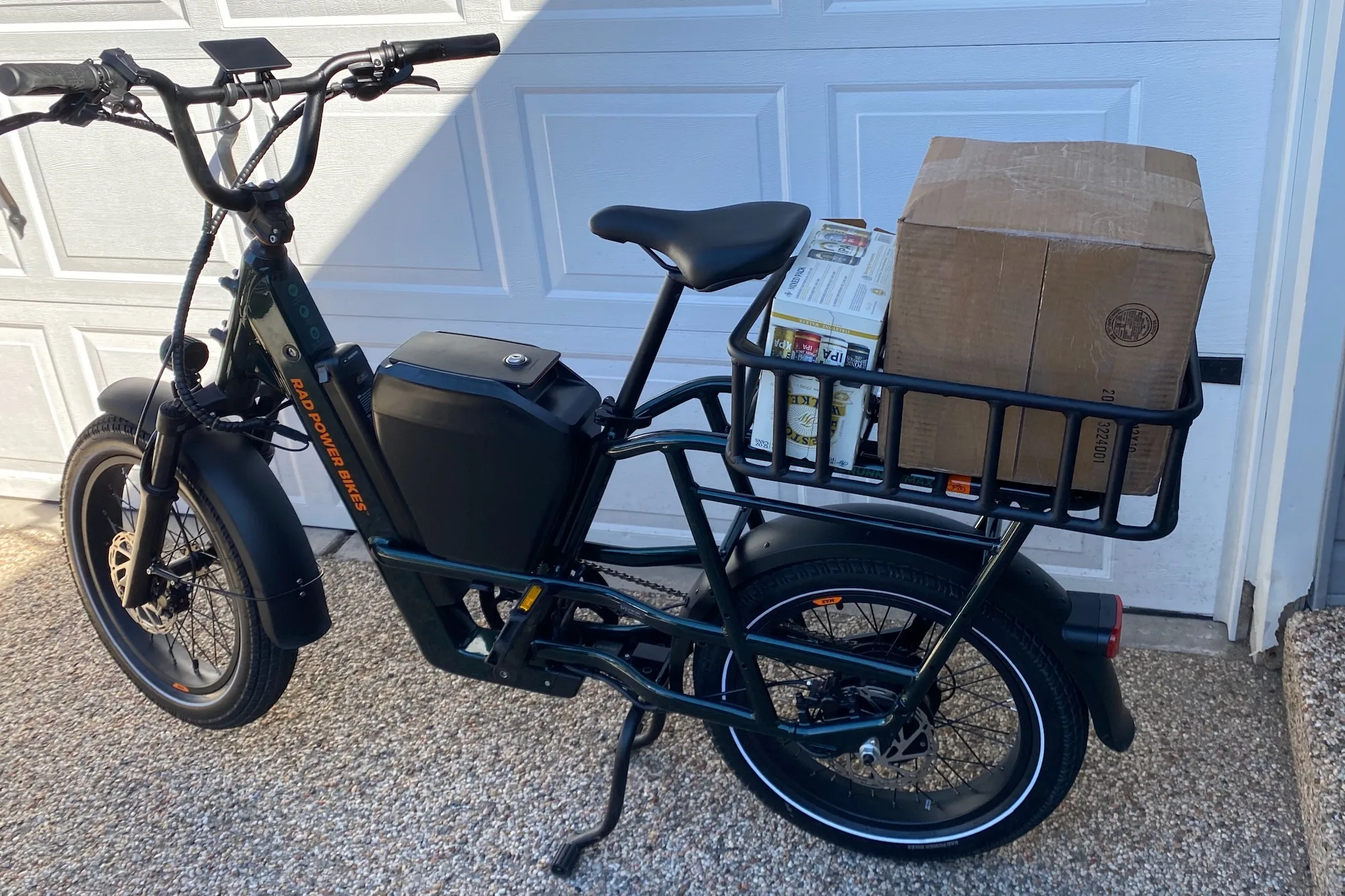
Rad Power RadRunner Max: My Takeaway
In the summer, I always aspire to use my car as little as possible, and e-bikes have been a great alternative. I’ve tested lots and owned a few full-size cargo models over the years, and I always expect to like them more than I actually do. I don’t have kids, so the ability to carry two passengers on a rear rack is lost on me, at least for now. That’s not to say that larger cargo bikes aren’t awesome, because they definitely are, but I just don’t really need one.
That’s what’s great about the RadRunner Max. It can handle all the weight and cargo that I need it to, and its size is a better fit in my garage. It handles better, too. To me, it seems like the SUV of e-bikes. It carries more than your sedan, but it’s not a full-blown truck. We’re all unique, of course, and our needs vary, but the more compact RadRunner Max suits mine perfectly. I guess now I understand why you see so many of them out and about.
If you’re in the market for a utilitarian electric bike but aren’t interested in committing to a full-size cargo model, the RadRunner Max is a great option to consider. You can learn more about it and the rest of Rad Power’s electric bikes at:

